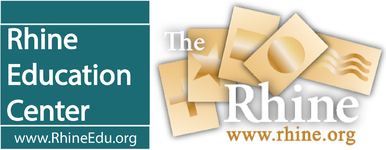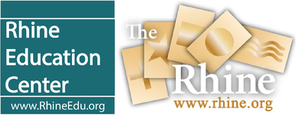Syllabus: Paranormal Case Studies
Course Description
Learn about the paranormal through the study of investigations and reports of apparitions, hauntings, and poltergeists.
This 8-week course will take a deep look at a hand-picked group of professional investigations of apparitions, hauntings, and poltergeists, as well as significant surveys of similar experiences. Included will be key cases (like the Seaford Poltergeist case which produced the RSPK model), important investigative methods, and a discussion of two major surveys of spontaneous psi experiences and what they say about psi in general.
Instructor Loyd Auerbach will present his own cases with details, video shot on site, and insights that have not made it into published reports or television interviews. Students will have the opportunity to ask deeper questions about Auerbach’s cases.
Course Outline
-
Paranormal Case Studies
-
Course Overview & Discussion of Case Studies
- Overview of the course
- Review of definitions/labels related to phenomena
- What to look for in case studies
- Quick Case Examples
- Garden Grove Apparition Case (with video from Sightings)
- Kasicki Case, Archer, Florida (with video from Haunted America)
- Petaluma Rock-Throwing Poltergeist
- Martinez “Environmental Hell” Case
-
Key First Hand Cases
- “The Black Knight of Petaluma"
- Context of the Investigation and Investigators
- What was first reported
- Backstory of the witnesses
- First visit and witnesses
- Further research
- Second visit and witnesses
- Conclusions
- “Lois of Livermore”
- Context of the Investigation and Investigators
- What was first reported
- Backstory of the witnesses
- First visit and witnesses
- Further research
- Conclusions
- Follow-up with the Family
- “The Black Knight of Petaluma"
-
The Seminal RSPK Case: The Seaford Poltergeist (1958)
- Background
- The witnesses and investigators, including:
- Police
- Firefighters
- Magicians
- Parapsychologists
- Conclusions and the RSPK Model
-
The Moss Beach Distillery Investigation Since 1991
- Context of the Investigation and Investigators
- History of the Sightings and Experiences
- First visit and witnesses
- Further research and so many visits
- Video testimony
- Conclusions
- Sightings of the Blue Lady away from the Distillery
-
Key Surveys and Experiments with Hauntings
- The SPR’s Census of Hallucinations (19th Century)
- John Palmer’s Survey with Charlottesville, VA, residents (1970s)
- The Evolution of the Haunting Methodology of Gertrude Schmeidler
- Gertrude Schmeidler’s Initial “Experiments” with Hauntings
- Next Steps
- Replications (with some changes) by Schmeidler, George Hansen, and Michaeleen Maher
-
First Hand Accounts of Investigations
- The Living Apparition (and Haunting) in Marin, California
- Context of the Investigation and Investigators
- What was first reported
- Backstory of the witnesses
- First visit and witnesses
- Further research
- Second visit with a psychic
- Additional information from locals
- Conclusions
- The Banta Inn, Tracy, California (late 80s into the 90s)
- Context of the Investigation and Investigators
- What was first reported
- Backstory of the key witnesses
- First visit and witnesses
- Further research
- Additional visits with and without psychics/mediums
- Conclusions
- The Living Apparition (and Haunting) in Marin, California
-
The USS Hornet Aircraft Carrier Museum: Since 1999
- Context of the Investigation and Investigators
- History of the Sightings and Experiences
- First visit and witnesses
- Further research and so many visits
- Video testimony
- Conclusions
-
A Reincarnation Case, A Case of Psychic Fraud, and Conclusions
- From the files of the University of Virginia: A Case of the Reincarnation Type
- Context of the Investigation and Investigators
- Background of the Case and Individuals Involved
- Interviews and Research
- Conclusions
- General Issues for Investigation of Cases of the Reincarnation Type
- A Case of Psychic Fraud: Ronny Marcus
- Background of Israeli psychic Ronny Marcus: Claimed PK Abilities
- Background of his visit to the US: How did it happen and Who brought him?
- Initial meeting with researchers at Lawrence Berkeley National Laboratory
- Demonstrations and Discussion at Rosebridge Graduate School (with video)
- Meeting with scientists at University of California, Santa Cruz (including two magician colleagues of Auerbach)
- End Results
- Case Studies: Conclusions and Lessons Learned (and More to Learn)
- From the files of the University of Virginia: A Case of the Reincarnation Type
-
Course Materials
Suggested Readings:
There is no specific text for this class, however, students will be provided with short readings or videos which will help them to better understand content of the lectures.
Course Activities
- Students will be expected to view the class broadcasts or the recordings of the classes each week.
- Students will be expected to participate in weekly discussion forums and activities. Each student will be expected to provide an original posting each week and to respond to at least one other student in the discussion forums. Greater participation in this area will be considered during class evaluations.
- One multiple choice or short answer evaluations will be assigned after the 4th or 5th week of class.
- Students will submit a final project based on the specifications in the courseroom.
Evaluations and Grading
Students who are taking the course for a grade will be assessed using a letter grade based on the standard letter grade format.
A – 90 - 100
B – 80 – 89
C – 70 – 79
D – 60 – 69
F – Below 60
Participation in the forums is a large component of the grading, and substantive postings are necessary to get full credit for each discussion topic.
The following activities will be considered to contribute to the courses as follows:
Discussions (Total 40%): 5 points for each of the 8 weeks including responses to other people's posts
Assessment #1 (30%)
Final Project (30%)

